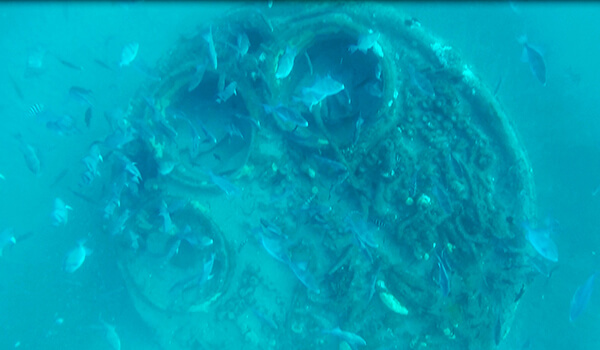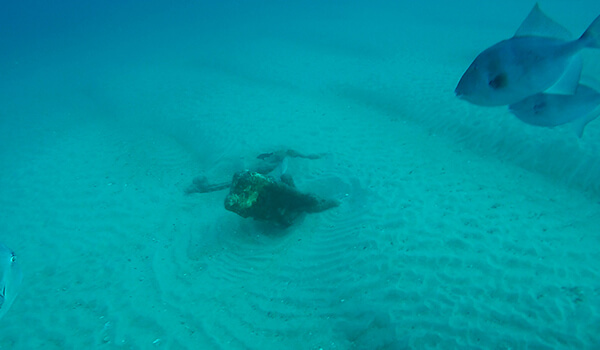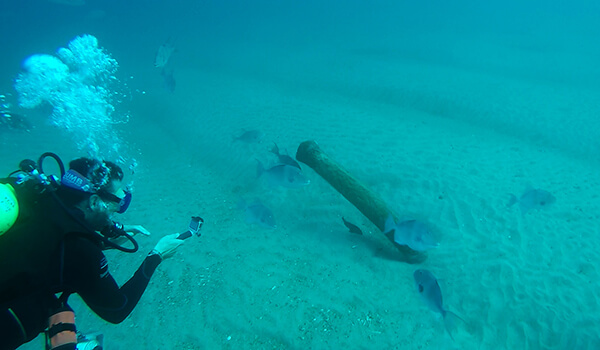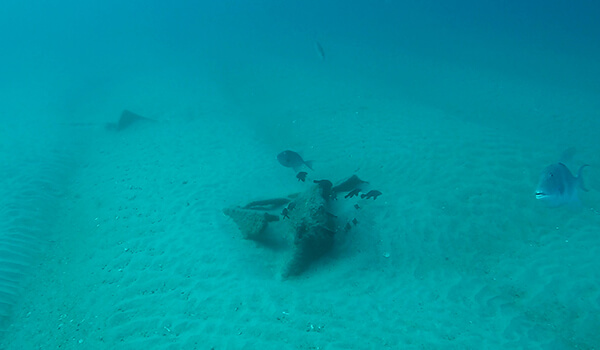Empire Thrush
Ship Stats
Location: 35°12'21.56"N, 75°15'7.81"W (35.20599, -75.25217)
Depth: 65 feet
Vessel Type: Freighter
Length: 395.5 feet Breadth: 53 feet
Gross Tonnage: 6,160 Cargo: 5,000 tons of rock phosphate, 740 tons of TNT, and 2,800 tons of citrus pulp
Built: 1919, Federal Shipbuilding & Dry Dock Co., Kearny, New Jersey, USA
Hull Number: 12 Port of Registry: London, United Kingdom
Owner: Ministry of War Transport, United Kingdom
Lloyd's Register Details: Steel hull, one deck, one shelter deck, longitudinal framing, DR geared steam turbine, fitted for oil fuel, three Scotch boilers.
Former Names: Lorain (U.S. Shipping board, 1919-1937)
Date Lost: April 14, 1942
Sunk By: U-203 Survivors: 55 of 55 (0 dead)
Data Collected on Site: Still photography; high resolution multibeam
Significance: Casualty of World War II’s Battle of the Atlantic
Wreck Site
The visible remains of Empire Thrush are quite limited. In 1944, two years after the vessel sank, a Navy salvage team set explosives inside the sunken vessel to detonate and reduce the remains to help aid navigation. Additionally, the site was wire dragged to break up any submerged remains. Following this, it was initially observed that only a large hole remained where the vessel once laid. In 2016, NOAA visited the site and located a single scotch boiler via multibeam sonar. Divers documented the site, revealing additional material near the boiler. Any additional remains are most likely buried in the ever-shifting sand.
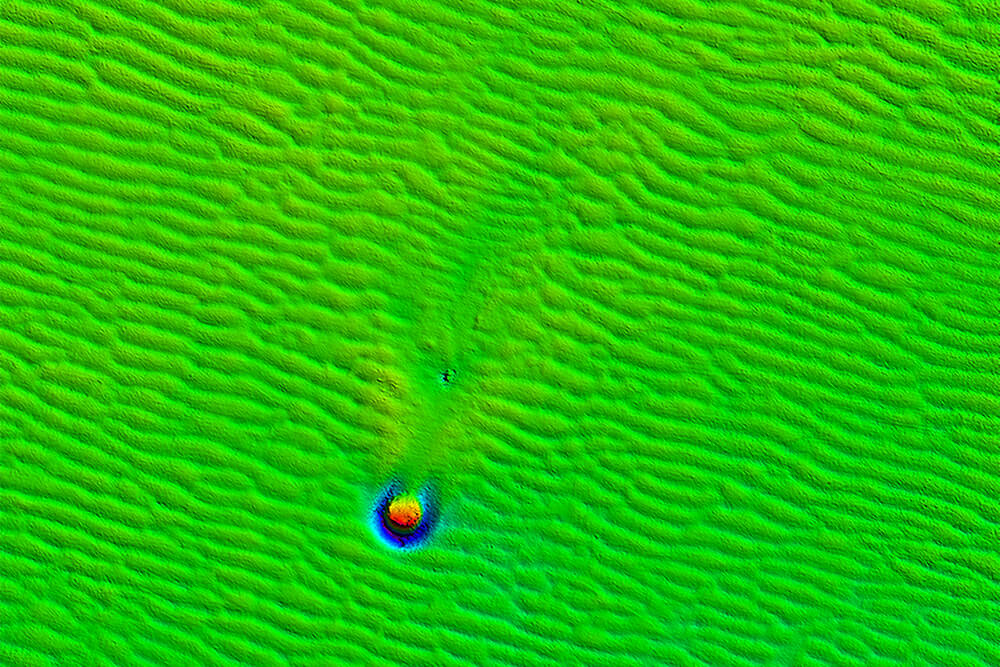
Historical Background
Built by the Federal Shipbuilding and Drydock Company in 1919 for the United States Shipping Board, Empire Thrush was originally named Lorain. The vessel remained under control of the U.S. Shipping Board until it was placed in reserve in 1937. In 1942, with the increased need for military transportation, the vessel was transferred to British control, renamed Empire Thrush, and operated under the control of the Ministry of War Transport.
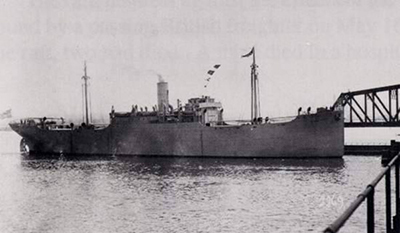
On April 14, 1942, Empire Thrush was travelling alone and unescorted about 17 miles east of Cape Hatteras, North Carolina. It had left Tampa, Florida, with a cargo of rock phosphate, TNT, and citrus pulp. That afternoon, U-203 attacked Empire Thrush. The U-boat fired one torpedo, which hit its mark and caused the ship to slowly sink.
The entire crew of 55 made it safely to the lifeboats. Shortly after the attack, the crew was picked up by American Q-ship USS Asterion (AK-100), which had witnessed the attack. On April 18, 1942, the survivors landed at Norfolk, Virginia.


